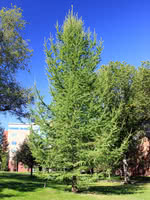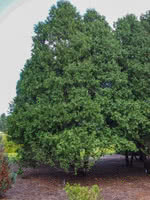Mon-Fri 9am - 5pm Mountain time
Tamarack Larch vs Eastern White Cedar (Arborvitae)
Larix laricina
Thuja occidentalis
Staff Favorite!
Tamarack is a small to medium-sized native conifer tree featuring needles that turn an attractive gold before dropping in the fall.
This cold-tolerant tree grows well in very wet conditions, as long as it is exposed to full sun.
Eastern White Cedar is a slender growing conifer often used as a decorative tree or a hedge. This tree is an effective privacy screen even in winter and a great long term solution to urban crowding or a drab yard.

